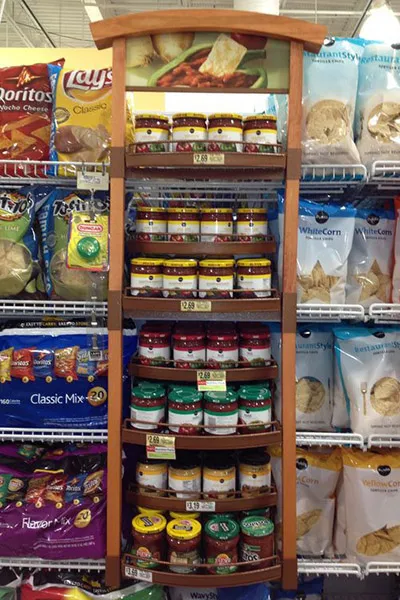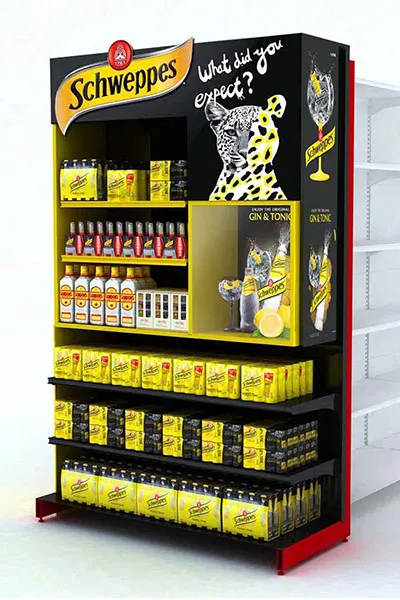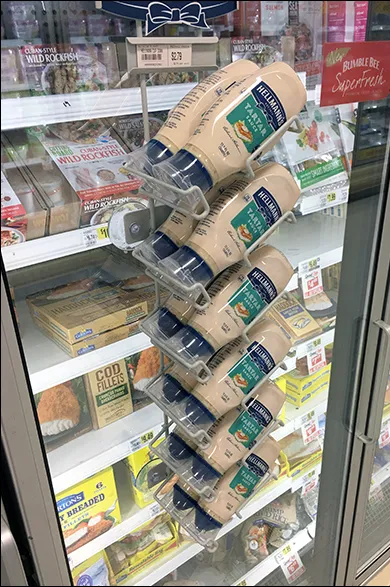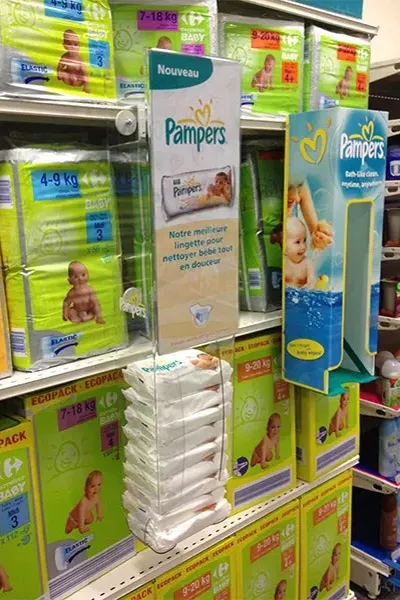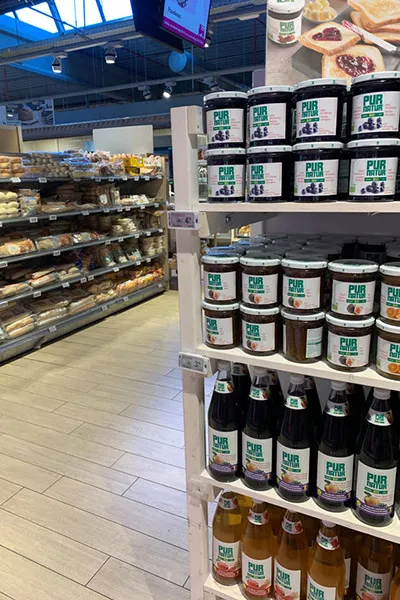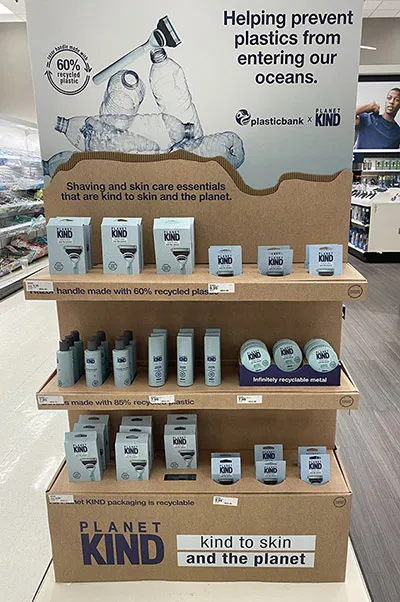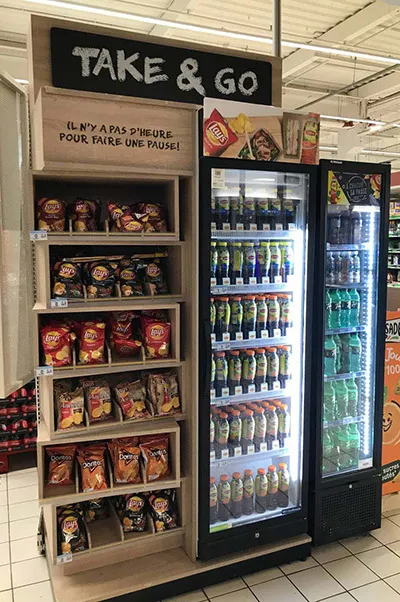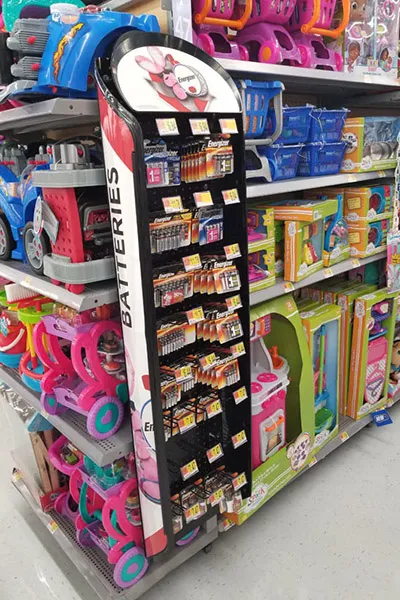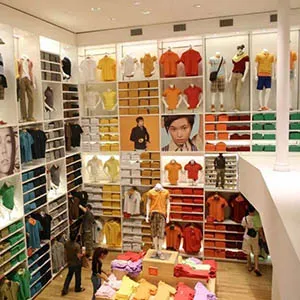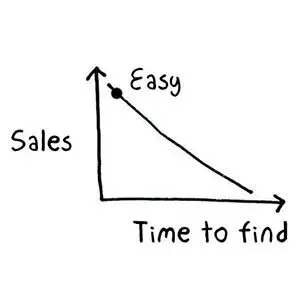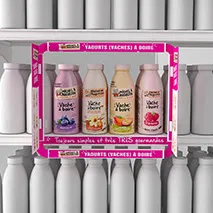Cross-selling in retail: Stimulate sales with cross-merchandising & cross-category display
1500 words
#marketing #merchandising #POP
June 2023 — bh
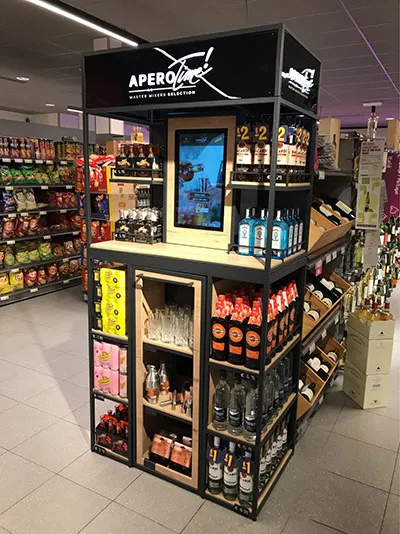
As a brand manufacturer, one of your objectives is to develop your sales. Retailers also have the objective of increasing their sales, increasing the average basket, making their sales space more profitable, etc.
For buyers, the initiatives are trickier: customers don't always appreciate aggressive techniques. By appealing in a non-intrusive way, merchandising offers a wide range of tools for achieving these objectives.
One of these is cross-merchandising, which enables your product to be promoted and sold outside its usual aisle. That display of barbecue sauce strategically placed in the meat section didn't happen by chance.
Tips, best practices, examples... we tell you all about it in this article. Let’s get academic first and define cross-selling.
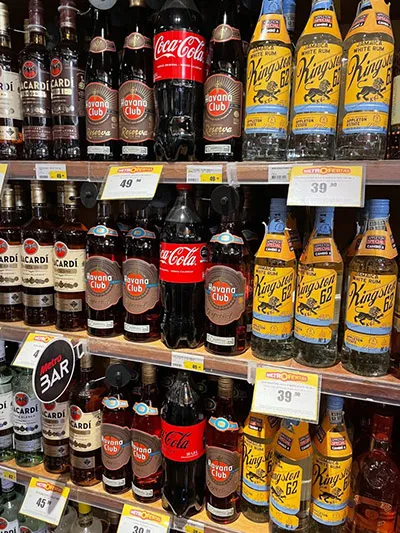
Pilotes specializes in the design of commercial furniture, display and merchandising solutions. We offer 100% customized point-of-purchase materials tailored to the in-store projects of brand and retail. Because we care about the climate and environment, we analyze the lifecycle of each project to avoid, reduce, and offset its impact 🌍🌿
Do you have a project planned? Contact us and let’s bring your vision to life together!
What is cross-selling? (definition and examples)
Cross-selling (add-on or suggestive selling) involves all initiatives that encourage customers to buy related or complementary items that they may find useful. The recommended items are relevant to the one that is being bought. Logical pairing happens in every shop at almost every visit. Customers are not always aware of it.
Examples of cross-selling include:
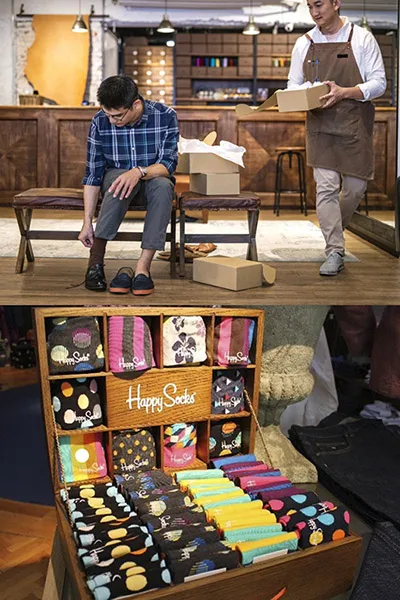
- A sales associate at a footwear retailer suggests: “May I recommend a relevant product to clean your new sneakers?"
- On her television shows, Oprah Winfrey promotes books, magazines and website.
- At the end of an airlines purchase, consumers are offered a tick-box option to buy travel insurance.
- Sellers of household appliances offer extended warranties.
- Online shops collect information to put them into the perfect “customers also bought" or “frequently bought together"-position. Amazon attributes as much as 35% of its sales to cross-selling.
- A mobile phone retailer suggests that a customer considers a new case for his or her new phone.
- A fashion retailer bundles a complete outfit, so the shopper sees how pieces fit together. Disruptively placed display materials remind visitors of latent needs for apparel and accessories.
Cross-selling is often confused with impulse buying. Cross-selling involves recommending a related item to the customer, which may lead to an impulse purchase — a spontaneous decision to buy that occurs after the customer has entered the store and becomes captivated by the merchandise. As you can see, these behaviors can often overlap or blend.
Cross-selling in retail: quick and convenient access
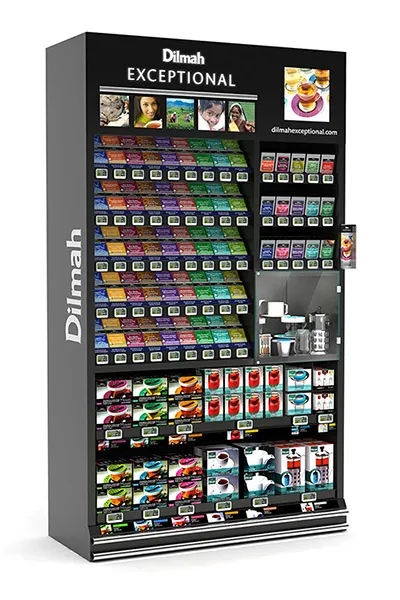
©Pilotes PLV
Self-serve stores lay out the offering on shelves. Shoppers rush through the aisles, put what they want in their baskets and check out before to bag their purchased items. There’s no shop associate to follow them, nor to give advice.
In these commercial environments, product placement is essential. Storage systems, such as linear shelving units, are used to display and stock the merchandise.
The No 1 priority is to make it easier for shoppers to find what they need. Therefore, these fixed fixtures are used to organize the store in aisles, a clear and obvious layout of sections, departments and categories, such as food & beverage, health & beauty, household goods, supplies, etc.
What is cross-merchandising? (definition and examples)
Because physical distance helps us understand the relation between products, cross-merchandising (cross-promotion, cross-category or joint merchandising) is the practice of displaying complementary products from different categories together. The goal is to provide quick and convenient access to products consumed together. Or it suggests to customers an additional item that “goes well with" their primary item — "products that work well together". By offering connected products, retail can generate additional revenue.
“Consumers want to see products together that they would consume together“, Michael Tilley, associate director of Shopper Marketing at Mondelez (source)
Examples of cross-category display & cross-merchandising for products that are typically used together:
Some tips for effective cross-merchandising
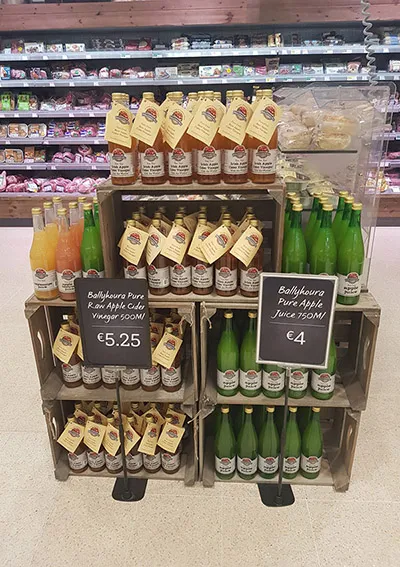
Brand manufacturers love cross-merchandising: second product placement (or dual location) increases the chances for a sale. And it's a opportunity to make the brand visible to shoppers who might not visit that part of the store. Retailers however approach the initiatives more cautiously. Product on those 2nd placements may run out of stock
However, cross-merchandising can bring value to both parties, and to customers. Let's take a closer look at the benefits, if managed correctly.
Trigger a shopping need within the store
This involves helping visitors realize they need another product to go along with their purchase. Lemons merchandised near seafood, batteries for toys, a corkscrew for wine, an oyster knife with oysters are the most obvious examples.
But emotions can also trigger a shopping need, there and then in the store: biscuits with coffee, fabric softener with detergent, feeding bottles with baby milk, a special beer to taste with a fresh meal, greeting cards next to the flowers or cookbooks at a tasting stand … The more a connected product can enhance the consumption occasion, the more likely it will inspire impulse buying.
Increase convenience, save time and reduce frustration
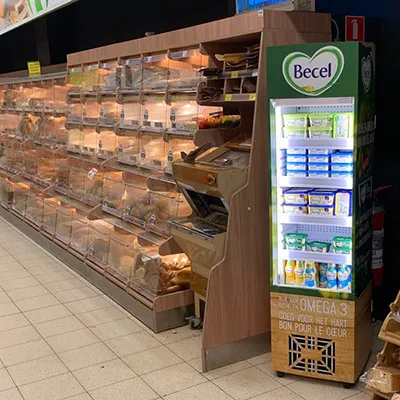
By placing together everything shoppers need for a particular shopping mission, retailers can save them time, increase convenience and reduce frustration. For example, supermarkets in business districts can set up a deli shop-in-shop with a selection of everything one would desire for lunch: sandwiches, salads, sushi, soft drinks, fruit, chips, desert, a token for coffee after lunch, a fast checkout lane and a sitting corner.
Inspire
Cross-merchandising works best when it adds value to the shopper. Most of the times they are in a hurry ticking their (mental) shopping list and missions. Sometimes they don’t know what they are looking for. If during a shopping trip inspiration is lacking, cross-merchandising can fill the gap, answering to a consumption need instead of selling a product. For example, pre-measured ingredients for recipes can be placed together in a delicious setting, ready to be picked up by home cooks — a inspiring solution to a common shopper problem: what to make for dinner tonight that is different, but quick and easy.
Create excitement around one-off occasions, holidays or projects
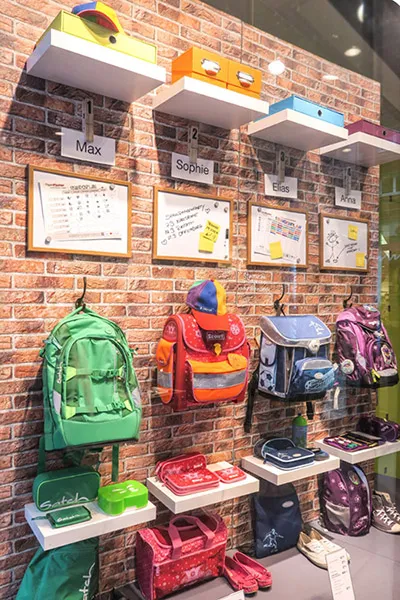
Christmas, Valentine's Day, back to school, springtime, perfect weather for BBQ, an exciting football match; these occasions provide opportunities for retailers to draw attention to seasonal or limited-time items. Strategically placed in unexpected locations, the animations infuse the store with life, creating an atmosphere that is vibrant and dynamic.
Introducing a new product or solution
Cross-merchandising and 2nd placement can make a product or brand really stand out at the critical moment of its introduction. Brands can introduce shoppers to a popular or hot product by placing it in unexpected, prominent or high-traffic places around the store, where shoppers will find them while looking at other products. Or they can communicate the usefulness of the product by making it visible next to the problem it solves.
Related article > Cross-merchandising display Lenor fabric softenerKey takeaway
Cross-merchandising or cross-category displays work best when they align with shopper's missions or trigger an immediate shopping need within the store. Effectiveness lies in delivering value to the shopper, either directly through time-saving and reduced frustration, or indirectly by creating an enhanced consumption occasion.
Do you wish to stimulate sales for your brand with cross-merchandising tactics? Reach out today to set up a free consultation. We'll find the best solution for your brand.
